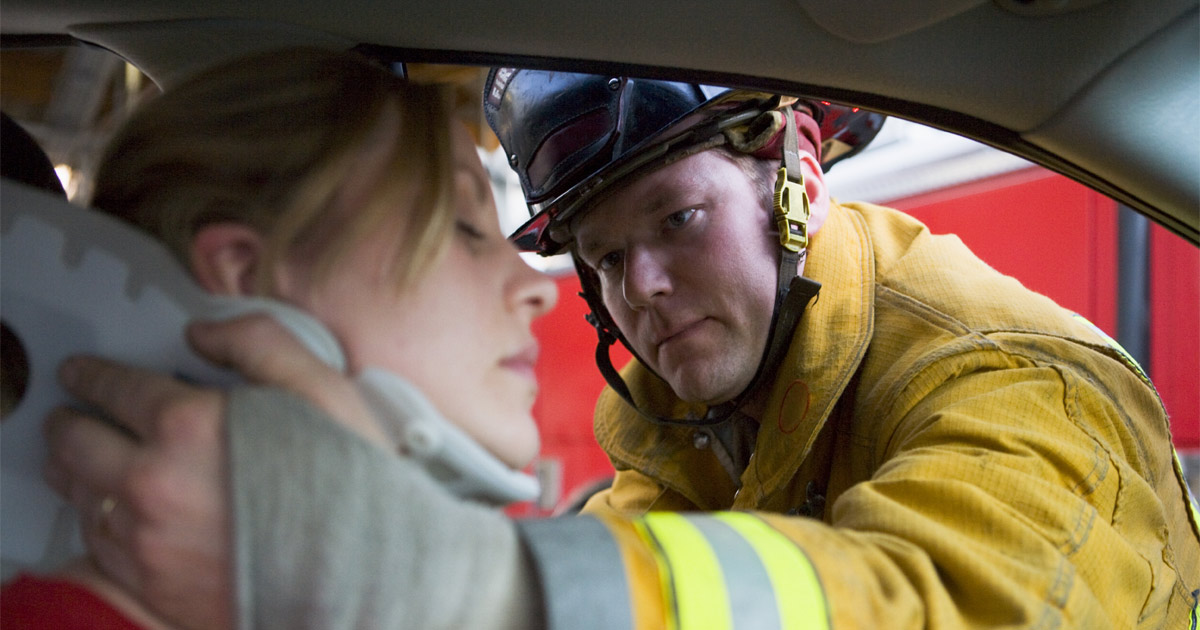The Ohio State Patrol recorded more than 6,000 motor vehicle accidents across the state last year. Many resulted in severe injuries to drivers, passengers, and pedestrians.
When a moving vehicle collides with another vehicle or object, immense force is released. Upon impact, the human body absorbs some of this force. The greater the force of impact, the more likely occupants will get hurt in a car accident.
The greater the force, the more likely severe injuries will occur. Bruising and broken bones are possible, but there are many other common car accident injuries.
Bruises
Bruises or contusions are formed when blood pools under the skin after an injury. Passengers can be bruised after impact with the interior of the vehicle. Bruises begin as blue, black, or purple areas of discoloration and gradually fade over time. Some bruises are tender to the touch.
Bruises are not usually dangerous. However, one type of bruise can indicate a more severe condition. A hematoma is a painful, swollen bump that requires prompt medical attention. Bruises can also be a sign of internal bleeding.
Cuts and Scrapes
Handbags, devices, eyeglasses, keys, and other loose objects can become projectiles that tear or pierce the skin in a crash. Scrapes and cuts are typically not severe and only require basic first aid.
However, deep or large lacerations may require stitches. These injuries can also allow germs to enter the body, so it is essential to clean and cover skin wounds and watch for signs of infection.
Arm and Leg Injuries
Because occupants’ arms and legs are not restrained with seat belts, they are more vulnerable to damage in a car accident. The most common arm and leg car accident injuries are bruises, cuts, sprains, and strains. A person’s arms can be thrown against the door, causing broken bones or even amputation. Knee injuries happen when the passenger slams against the dashboard or the seat in front of them.
Soft Tissue Injuries
Soft tissue injuries include the body’s tendons, ligaments, and muscles. Damage to these connective tissues is considered the most common car accident injury.
Whiplash is a soft tissue injury affecting the head and neck. During a crash, the occupant’s head can suddenly jolt back and forth, overstretching the ligaments and muscles in the neck. Whiplash is particularly common in rear-end collisions.
Facial Injuries
There is no disputing the benefits of front airbags for reducing severe injuries. The National Highway Traffic Safety Administration estimates that as of 2017, front airbags saved more than 50,000 lives.
Although front airbags prevent fatal injuries in many cases, they can still cause facial injuries. As the airbag deploys, it can cause concussions, eye damage, nose and jaw problems, and other injuries to the structures of the face.
Chest Injuries
Broken chest bones and soft tissue damage can also occur when a front airbag deploys. Unrestrained passengers may collide with the steering wheel, dash, or seat in front of them, leading to broken ribs and internal injuries.
Like airbags, seat belts are essential for saving lives. Yet, some passengers are injured by seat belts during a crash. Cuts, bruising, and muscle injuries from seat belts are not uncommon. Do not let this discourage you from buckling up, however. Crash data clearly shows the advantages of wearing your seat belt far outweigh the risks.
Head Injuries
Sudden stops or changes in direction can cause the head to move unnaturally, causing painful sprains and strains. The head and brain can be injured due to blunt force from an object, like the steering wheel, metal, glass, or even contact with another occupant.
A concussion is one of the more common car accident head injuries. This type of traumatic brain injury (TBI) impacts how the brain functions. Concussions are caused by a sudden blow to the head or sudden, forceful shaking. Concussion symptoms include confusion, headaches, and problems with memory, vision, and balance.
Neck and Back Injuries
The force exerted upon the body in a collision affects the structures of the neck and back. Ruptures or herniations of the small round discs that cushion the spine’s bones are common in car accidents. These can be quite painful and require healing time, rest, and physical therapy. Severe neck and back injuries can lead to chronic pain and mobility issues.
Chemical Burns
All motor vehicles contain multiple chemicals. These substances may leak and expose passengers to toxins in a crash.
Chemical burns from airbags deployment are a common example of chemical car accident injuries. The front airbags are deployed when a frontal collision occurs at a certain speed. When that happens, a substance called sodium azide is ignited, which releases hot gas and puts passengers at risk of thermal and chemical burns to the face, neck, chest, and hands.
Broken Bones
Occupants in car accidents often experience bone fractures due to the force of the crash. The most commonly broken bones are the pelvis, legs, and ribs. Treatment for broken bones depends on the extent and location of the fracture. Some patients may need a cast or splint, while others require surgery to ensure the bone grows back together and can support the body’s weight.
Internal Bleeding
Internal bleeding occurs when damaged blood vessels leak blood into the surrounding tissues. Because internal bleeding is not always immediately obvious, it can be difficult to detect.
It is essential to get a throughout check-up after a car accident. Internal bleeding and other invisible injuries can become life-threatening if left untreated.
Mental Trauma
A traumatic event like a severe collision can also affect a person’s mental health. Someone who survives a traumatic event may experience guilt, stress, anxiety, or depression. Some have trouble sleeping or cannot stop reliving the accident.
Research shows that individuals who experience serious motor vehicle accidents are at a greater risk of developing PTSD. PTSD can negatively impact a person’s quality of life and keep them from caregiving, working, socializing, and participating in routine tasks and activities.
After a distressing experience like a severe car accident, it is essential to seek proper medical care and take steps to address your mental health. As you focus on your physical and emotional recovery, consider consulting an attorney to manage the legal aspects of your case. Peace of mind starts with knowing someone is fighting for justice on your behalf.
Loveland Car Accident Lawyers at the Wolterman Law Office Will Determine the Best Course of Action After a Car Accident
If a negligent driver has seriously injured you, rest assured that legal help is available. You are more than just a case number. Our Loveland car accident lawyers at the Wolterman Law Office bring the experience and skills of a big firm while providing the personal attention of a small firm. Call us at 513-488-1135 or contact us online to schedule a free consultation. Located in Loveland, Ohio, we proudly serve clients in Fairfield, Norwood, Forest Park, and Hamilton County.


